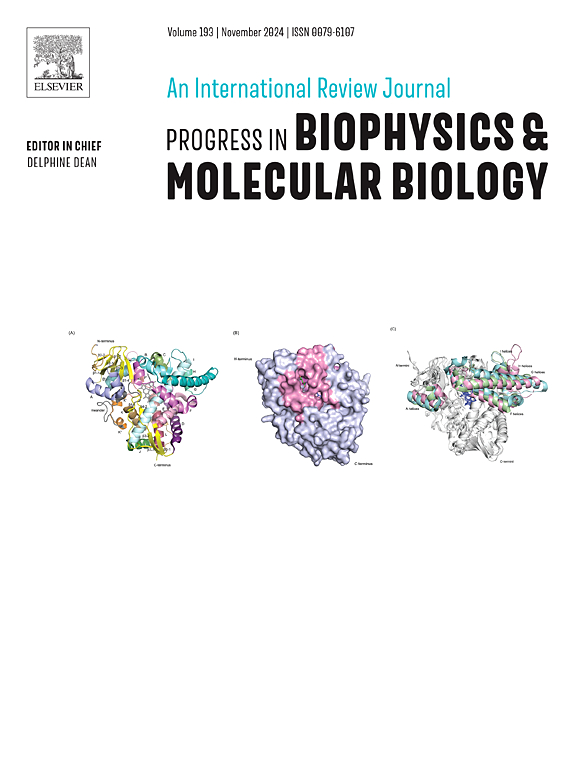The multifaceted roles of ST3GAL family in cancer: Mechanistic insights and therapeutic implications
IF 4.5
3区 生物学
Q2 BIOCHEMISTRY & MOLECULAR BIOLOGY
Progress in Biophysics & Molecular Biology
Pub Date : 2025-06-25
DOI:10.1016/j.pbiomolbio.2025.06.001
引用次数: 0
Abstract
Sialylation is a critical glycosylation process involving the covalent attachment of sialic acid residues to the terminal glycans of glycoproteins and glycolipids. This modification is predominantly mediated by sialyltransferases (STs), which play pivotal roles in cell signaling, immune response, and cellular adhesion and migration. Aberrant sialylation, resulting from dysregulated expression of STs, is a hallmark of cancer, frequently observed on the surfaces of both tumor and stromal cells. The ST3GAL family, a key subset of STs, facilitates α-2,3-sialylation and has emerged as a crucial regulator of tumor cell proliferation, motility, drug resistance, and the immunosuppressive tumor microenvironment. Despite its recognized significance, a comprehensive synthesis of the diverse roles and molecular mechanisms of the ST3GAL family in tumor progression is still lacking. This review consolidates current knowledge on the molecular structure, biological functions, and pathological implications of the ST3GAL family in cancer, with a focus on its roles in signal modulation, immune evasion, and therapeutic targeting. By highlighting its potential as a key player in oncogenic processes, this review aims to provide novel insights to inform future research and clinical applications.

ST3GAL家族在癌症中的多面作用:机制见解和治疗意义。
唾液酰化是一个关键的糖基化过程,涉及唾液酸残基与糖蛋白和糖脂末端聚糖的共价连接。这种修饰主要是由唾液转移酶介导的,唾液转移酶在细胞信号传导、免疫反应、细胞粘附和迁移中起着关键作用。异常唾液化是由STs表达失调引起的,是癌症的一个标志,经常在肿瘤和基质细胞表面观察到。ST3GAL家族是STs的一个关键亚群,促进α-2,3唾液化,并已成为肿瘤细胞增殖、运动、耐药和免疫抑制肿瘤微环境的重要调节因子。尽管ST3GAL家族具有公认的重要意义,但目前仍缺乏对其在肿瘤进展中的多种作用和分子机制的全面综合。本文综述了ST3GAL家族在肿瘤中的分子结构、生物学功能和病理意义,重点介绍了其在信号调节、免疫逃避和治疗靶向中的作用。通过强调其在致癌过程中的关键作用,本综述旨在为未来的研究和临床应用提供新的见解。
本文章由计算机程序翻译,如有差异,请以英文原文为准。
求助全文
约1分钟内获得全文
求助全文
来源期刊

Progress in Biophysics & Molecular Biology
生物-生化与分子生物学
CiteScore
8.60
自引率
7.90%
发文量
85
审稿时长
85 days
期刊介绍:
Progress in Biophysics & Molecular Biology is an international review journal and covers the ground between the physical and biological sciences since its launch in 1950. It indicates to the physicist the great variety of unsolved problems awaiting attention in biology and medicine. The biologist and biochemist will find that this journal presents new and stimulating ideas and novel approaches to studying and influencing structural and functional properties of the living organism. This journal will be of particular interest to biophysicists, biologists, biochemists, cell physiologists, systems biologists, and molecular biologists.
 求助内容:
求助内容: 应助结果提醒方式:
应助结果提醒方式:


